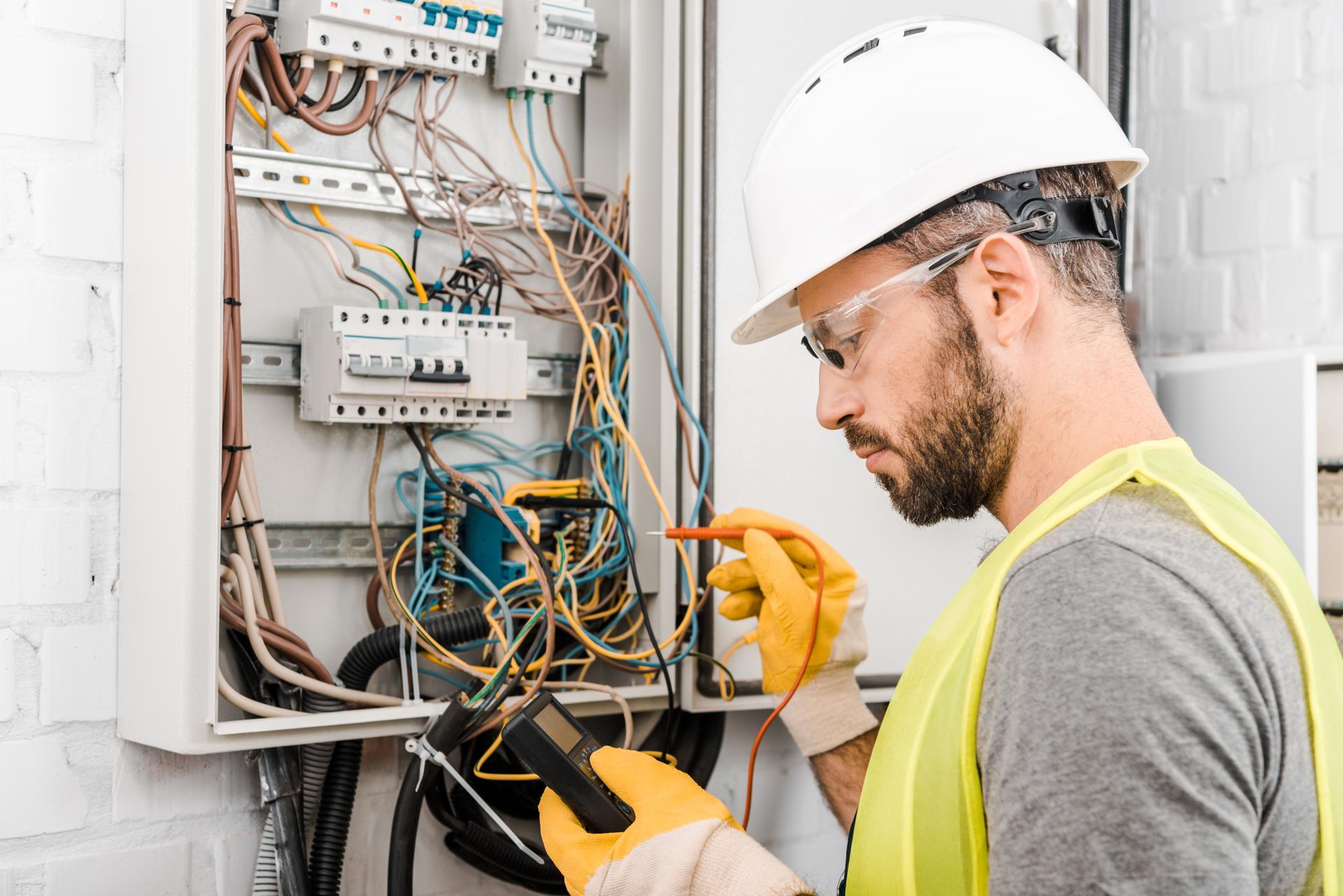Electrical Wiring 101: The Basics in Your Home

Electricity is a vital part of our everyday lives, supplying everything from the lighting in your homes, to devices that we use each day. But electric systems may be a bit complicated and understanding how they operate can be difficult. In this guide we’ll breakdown the various components in an electrical circuit, and show how circuits operate to power devices and appliances. Our residential electricians can handle any electrical jobs you need.
The components of an electrical system
An electrical system has several key components that work together to supply power to homes. They include:
Breaker box is the central distribution point for electrical power in a home in which the power is split into various circuits
Switches and outlets: the places where electricity is delivered to appliances and devices
Wiring: the electrical wires that transport power from the breaker box, to the outlets and switches
Electric appliances, devices and equipment: the appliances and gadgets that rely on electricity for their functions.
Electrical Circuits
An electrical circuit is a pathway which allows electricity to flow from the point of origin (the breakers box) to appliances and devices within a home. There are two types of electrical circuits in the home that are 120-volt and 240-volt circuits. 120-volt circuits are utilized for the majority of household appliances and appliances, whereas the 240-volt circuits are utilized for larger appliances such as dryers, air conditioners and electric ones.
Electrical circuits work by creating a loop that allows electricity to flow from the source to the appliance or device. The loop is made up of a hot cable that carries the electricity along with a neutral wire that completes the circuit, and the ground wire which provides the pathway for electricity to reach the ground in case the fault occurs.
Understanding the electrical Wiring
Electrical wiring comes in several different kinds, including non-metallic sheathed cables (NM) and armored cable (AC), and conduit. Each has its advantages and drawbacks, and the choice of wiring type depends on the particular requirements that the location requires.
Electricity travels through wiring through the creation of electrons through the wire. Electrons move through the wire from source, to device or appliance and then back to the source using the neutral wire. It’s essential to ensure that the wiring is installed and maintained properly, since defective wiring could lead to electrical hazards like shocks and fires.
Common Electrical Issues
Some common electrical problems that homeowners face include tripping the breakers, flickering lights, and electrical outlets that are not working. These problems can be caused by a variety of factors, including overloading circuits, loose connections, and faulty wiring.
If you experience any of these issues it’s essential to identify the cause and take appropriate action to fix the problem. In some cases this could mean contacting an accredited electrician to look over and fix the wiring.
Conclusion and Call to Action
Understanding the way electrical wiring functions is vital to ensure the safety and reliability of your home’s electrical system. By adhering to the guidelines laid out in this article to stay secure and avoid potential dangers.
If you have any questions or concerns regarding the electrical system in your home do not hesitate to call Local Electrician Chatswood. Our electricians are licensed and has the expertise and experience to handle all your electrical requirements. Contact us at 1300 610 481 to schedule a consultation.
FAQ
What are the symptoms of faulty electrical wiring?
The signs of an electrical wiring issue can include tripping breakers, flashing lights, and dead outlets, to name a few.
When should I schedule my electrical system at home inspected?
It is recommended to get your home’s electrical system inspected by an authorized electrician at least every 10 years.
What is the expected lifespan of wiring that is electrical?
The life span of electrical wiring depends on many factors, such as the type of wiring, the location it’s located in, and the standard of installation. In general, most electrical wiring will last for up to thirty years, or even more, with the proper installation and maintenance.
Do I need to fix electrical issues myself , or do I need to engage an electrician?
While some electrical issues can be fixed by homeowners, it is advised to hire an experienced electrician for the majority of electrical repairs. Making attempts to fix electrical problems without the proper education and knowledge can be risky and may cause damage or injury in your house.
What do I do if have an electrical issue at home?
In the event of an electrical issue first thing to do is to shut off power to the area affected by turning off the breaker or the fuse. Contact a licensed electrician to inspect and repair the problem as quickly as is possible.
By following these rules by following these guidelines, you can ensure the security and reliability of the home’s electrical system , and avoid any potential dangers. Be aware that when it comes to electrical repairs or installations, it’s always recommended to rely on the professionals. Call Local Electrician Chatswood at 1300 610 481 for all your electrical needs.
